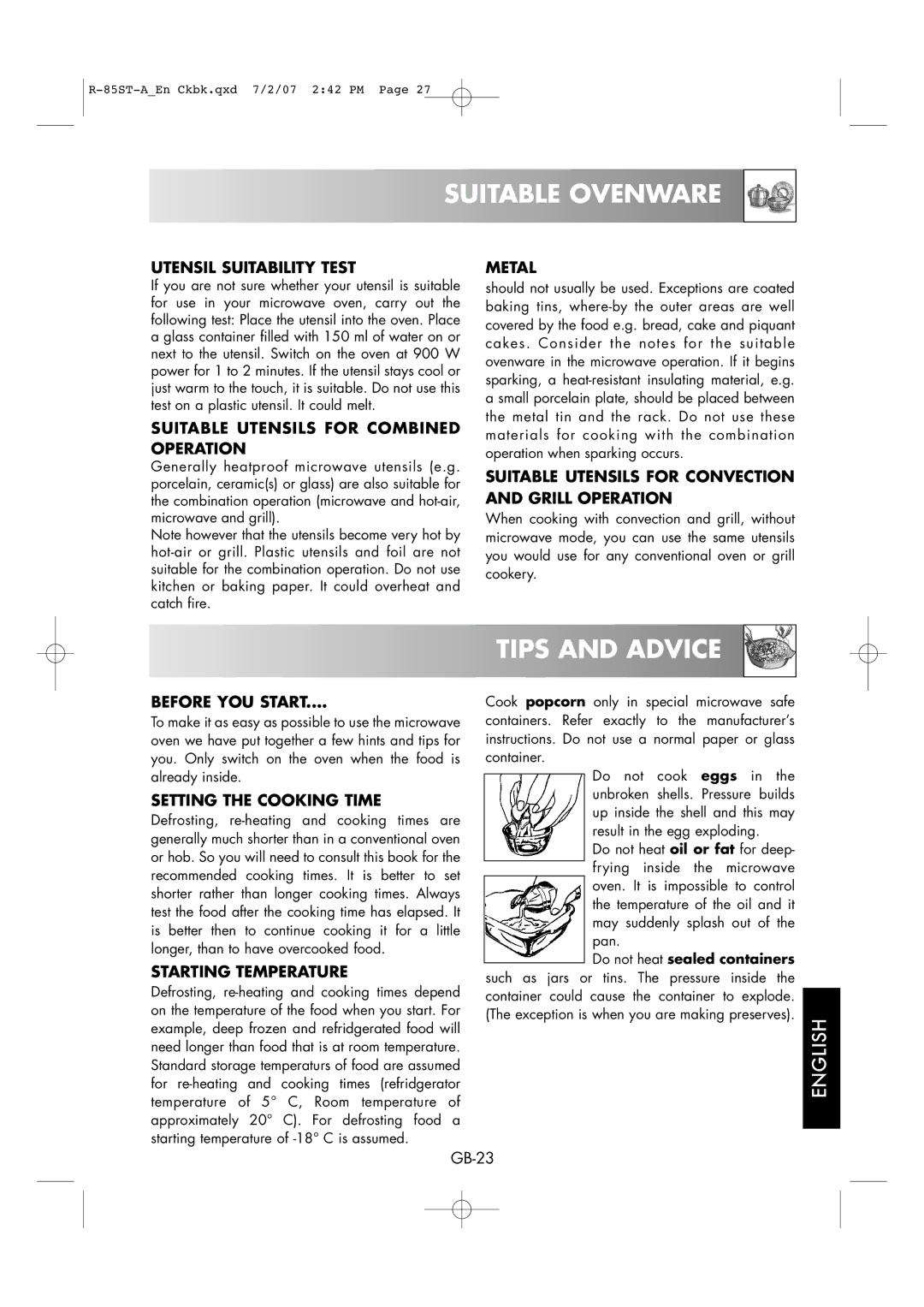
R-85ST-A_En Ckbk.qxd 7/2/07 2:42 PM Page 27























 SUITABLE
SUITABLE OVENWARE
OVENWARE



UTENSIL SUITABILITY TEST
If you are not sure whether your utensil is suitable for use in your microwave oven, carry out the following test: Place the utensil into the oven. Place a glass container filled with 150 ml of water on or next to the utensil. Switch on the oven at 900 W power for 1 to 2 minutes. If the utensil stays cool or just warm to the touch, it is suitable. Do not use this test on a plastic utensil. It could melt.
SUITABLE UTENSILS FOR COMBINED OPERATION
Generally heatproof microwave utensils (e.g. porcelain, ceramic(s) or glass) are also suitable for the combination operation (microwave and
Note however that the utensils become very hot by
METAL
should not usually be used. Exceptions are coated baking tins,
SUITABLE UTENSILS FOR CONVECTION AND GRILL OPERATION
When cooking with convection and grill, without microwave mode, you can use the same utensils you would use for any conventional oven or grill cookery.



























 TIPS
TIPS AND
AND ADVICE
ADVICE



BEFORE YOU START....
To make it as easy as possible to use the microwave oven we have put together a few hints and tips for you. Only switch on the oven when the food is already inside.
SETTING THE COOKING TIME
Defrosting,
STARTING TEMPERATURE
Defrosting,
Cook popcorn only in special microwave safe containers. Refer exactly to the manufacturer’s instructions. Do not use a normal paper or glass container.
Do not cook eggs in the unbroken shells. Pressure builds up inside the shell and this may result in the egg exploding.
Do not heat oil or fat for deep- frying inside the microwave oven. It is impossible to control the temperature of the oil and it may suddenly splash out of the pan.
Do not heat sealed containers such as jars or tins. The pressure inside the container could cause the container to explode. (The exception is when you are making preserves).
